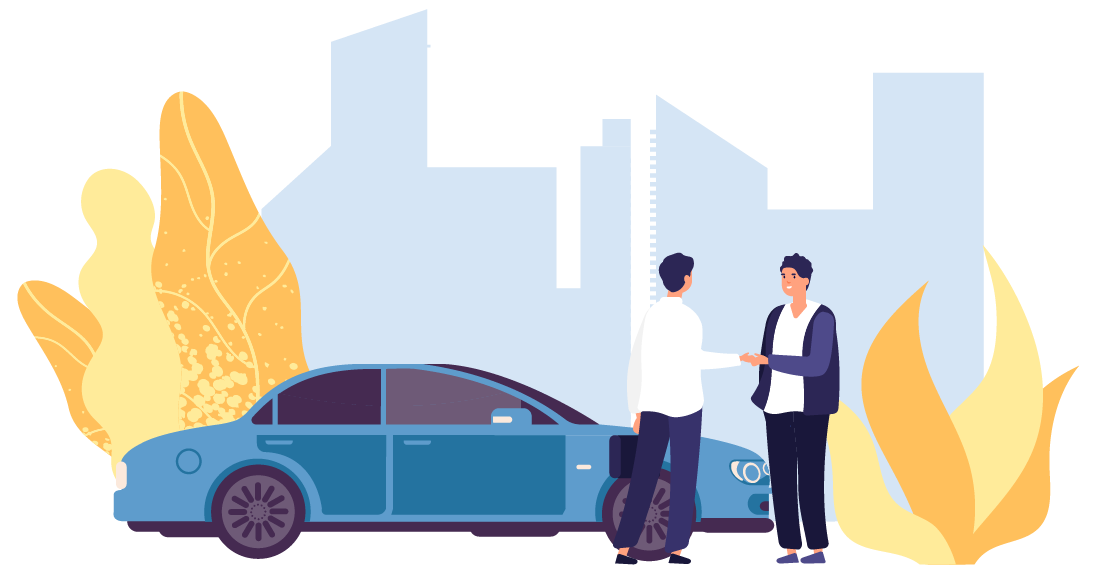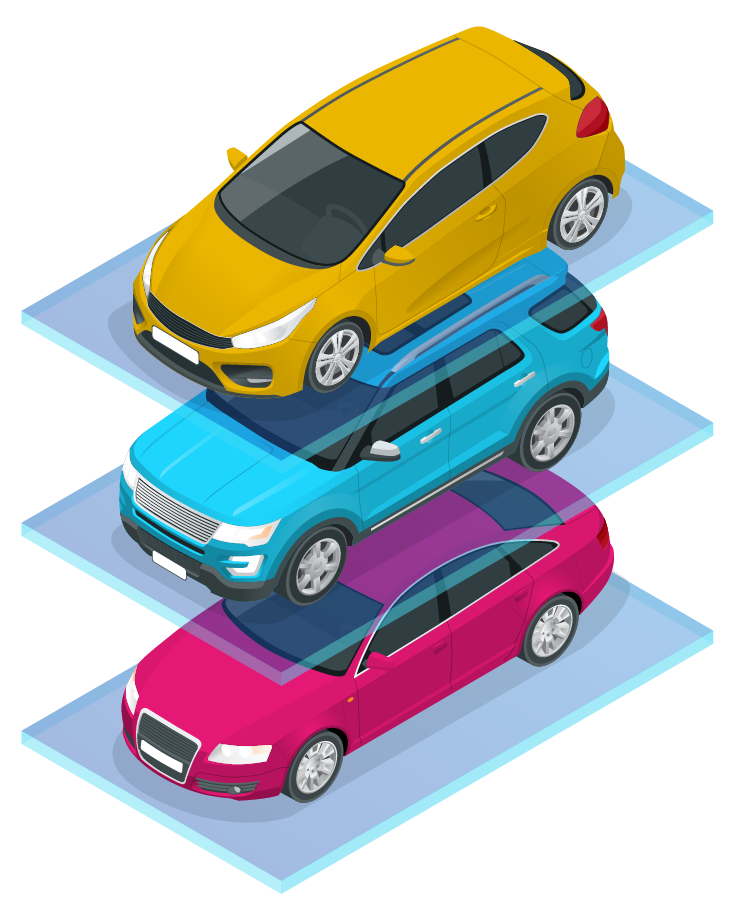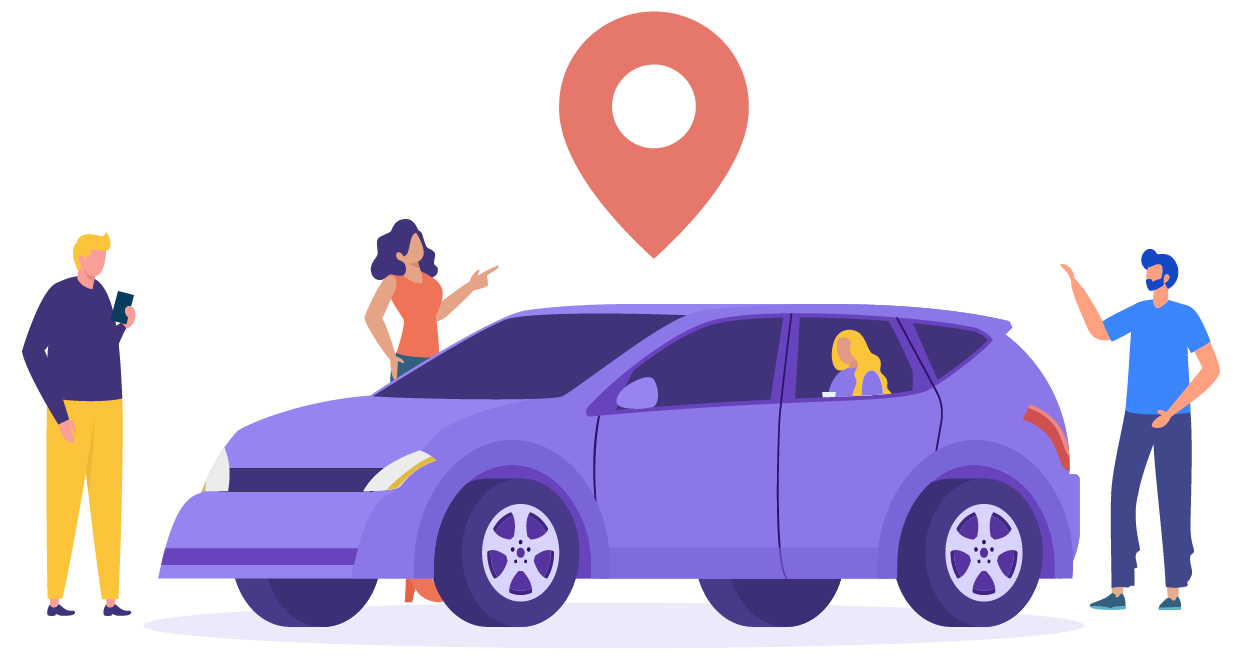The automotive industry is in a constant state of flux.
The economy, gas prices, government regulations, manufacturer requirements, public perception, changes and updates from Silicon Valley, even the 24-hour, non-stop news cycle—all external forces that can have a HUGE impact on your business as a dealer, but that are completely outside of your control.
What’s a dealer to do? It’s important for dealers to know what’s happening in the industry before you’re blindsided by the next passing fad. Many dealerships have not only noticed the changes in current trends but have already seen their sales impacted by them. In fact, there’s a chance your dealership has already been affected by these trends too, even if you haven’t realized it.
At the Traffic Institute, we know how important it is to your business that you to know what’s going on. So we’ve done the research for you, and we’ve identified the trends that are most likely to have a lasting impact on your business and how you can adapt and even leverage them to grow and sell more cars TODAY.
Here’s four trends happening that dealers need to know if you want your dealership to survive and even thrive this year.

Trend 1
Debt-Riddled Millennials Are Becoming The Largest Buying Group
Millennials have been the youngest independent buying group for a while.
Half of Gen Z, the generation directly following Millennials are under the age of 18. And studies show that if Gen Zers are buying cars, they’re usually doing so with help from older generations.
On the opposite side of the spectrum, Baby Boomers and Gen Xers are still buying cars. But as we move into the new decade, Millennials, now aged 25-40, are taking over the buying majority. According to the experts at J.D Power PIN data, Millennials are predicted to make up 40% of all car sales in the coming year. And in spite of some common misconceptions, they are definitely spending money.

In fact, the average Millennial racks up more than $47,000 in expenditures each year. As a buying group, Millennials spend $600 billion in the U.S. each year.
And now that most Millennials have become working professionals, even the youngest members of the generation are transitioning out of starter vehicles and into what may be their first major purchase. That fact alone makes the car buying process emotional and difficult for many of them.
The dealerships who understand how emotionally taxing the car buying process is for Millennials and who have systems in place to alleviate their stress have an opportunity to benefit from the influx Millennial buyers.
But the challenges don’t stop there
Unfortunately, Millennials come with more debt than any generation before them—many of them plagued with student and/or personal debt.
Millennials also come with a financial portfolio, unlike any other generation. They rely less on credit cards than the generation before them, opting more for debit card usage, leaving them with fewer opportunities to build credit. Not surprisingly, Millennials have an average FICO credit score of 668—a full 10 points lower than Gen Xers average when they were the same age.
Because their financial profiles are so different from the generations before them, they’ve also developed vastly different buying habits. And these buying habits are often accused of killing industries, like department stores and cable TV.

Millennials value trust, authenticity and choice. They are cautious about who they take advice from and even skeptical of financial advice given by parents and professionals. They are not typically brand loyal, unless they receive a customer-centric experience (Forbes, May 2019). In fact, experience is the name of the game when it comes to winning over Millennials—70% of them will spend extra to eat at the best restaurant in town and they are more likely to spend on comfort and conveniences.
With this in mind, if traditional dealerships don’t start adapting to Millennials’ buying preferences, it won’t be long before we end up reporting that Millennials are also killing traditional dealerships.
But here’s the deal
Millennials aren’t going to kill traditional dealerships because they prefer newer buying methods. No, millennials will kill traditional dealerships if traditional dealerships aren’t willing to adapt to the things Millennials consider important to the buying process.
The truth is, Millennials aren’t willing to overlook things like pushy salespeople and dingy showrooms that have never been updated. More than anything, Millennials seek experiences. And that includes shopping experiences.

If you don’t want Millennials to overlook you for an online experience, you need to give them a reason to choose your dealership over everyone else.
Here are just a few ways you can create buying experiences that will attract Millennials.
- Train your salespeople to have conversations that will engage Millennials. Selling through storytelling, being transparent and keeping all conversations short and sweet are all communication methods that appeal to Millennials.
- Update your showroom—Now more than ever, the experience in the showroom matters. Millennials do not want to shop at a rundown or dingy location. Create a fresh, inviting and clean environment.
- Start being more active on your social media accounts—try running mini engagement contests and giveaways.
- Be a contributor to the community—81% of Millennials expect companies to be committed to the public and charitable causes.

More than anything, you need to stock vehicles Millennials care about.
Remember what we said about Millennials and debt? It’s important to understand that because of the looming debt of many Millennials, most of them aren’t looking for the flashiest vehicles like the generations before them. Most Millennials are more interested in practical, reliable and affordable rides.
That means you don’t need to fight with other dealers at the auction to stock the newest models of each car from the most popular brands. Most Millennials will be happy to drive almost any vehicle that fits their situation and budget.
Trend 2
Ridesharing Will DECREASE AND MAKE WAY FOR MORE AUTO SALES
BEFORE THE PANDEMIC, RIDESHARING BRANDS LIKE UBER AND LYFT HAD BEEN GROWING STEADILY FOR A COUPLE YEARS, BUT WITH GROWING CONCERN FOR INDIVIDUAL SAFETY, MORE PEOPLE ARE OPTING TO BUY A VEHICLE INSTEAD OF USING SHARED TRANSPORTATION.
Although many rideshare companies have expanded their services to things like food and grocery delivery in order to keep up with the drastic drop in actual rideshare usage during the pandemic, many of them are still not as profitable or popular as they were before the pandemic. People currently don’t feel as comfortable in a stranger’s car as they did before the COVID-19 outbreak.

And while many Americans still view the other ridesharing services like food delivery, grocery delivery and in-town package delivery as a fast and efficient way to skip leaving the house themselves. The use of these services isn’t enough to sustain work for many of the current drivers, let alone incentivize more drivers to join the rideshare work force.

BUT THIS SHIFT AWAY FROM RIDESHARING COULD BE BETTER FOR DEALERSHIPS IN THE LONG RUN
Before the pandemic, many dealerships saw a boom in car sales specifically due to the influx of rideshare drivers upgrading their vehicles in order to meet industry expectations; however, currently, this demand is significantly lower.
But while you may not have the rideshare drivers as customers any more, the rideshare passengers are now entering the market. As people continue to feel uncomfortable using both public transportation and rideshare options, we're starting to see the emphasis on owning a vehicle return.
It’s important to note that these customers aren’t picky when it comes to make and model—they just want to drive something that fits within their budget and suits their lifestyle.
So don’t focus on things like features and upgrades when they visit your dealership. Ask them questions like, “what’s going to be your primary use for the vehicle?” and “how many people are in your family, and will need to use the vehicle at one time?” These questions show your customers that you're focused on solving their specific transportation needs and not just trying to sell them a car.
Trend 3
Electric Vehicles Are Growing In Popularity, But Not Among The Middle Class
Even for people not plugged into car industry news, it’s hard to avoid all the talk about electric vehicles.
From hybrids to full electric vehicles, there are over 30 different models for consumers to choose from and with major brands like Tesla, Nissan and Chevy releasing new models this year, it’s clear to see that the electric car trend won’t end soon.
Here’s why consumers seem obsessed with electric vehicles:
- Lower Maintenance Costs — Many electric or hybrid vehicles require less frequent or even no regular oil changes. This on top of the fact that little to no gas is needed to power these cars, it’s easy to see why people see electric vehicles as a smart economic investment.
- Environmental Consciousness — Gone are the days of social unconsciousness—nowadays people want to feel like they’re doing their part to help the Earth. And with global climate being such a hot topic, we’re able to understand the public’s overall interest in electric cars.
- Variety — The future is now, and the future has options. When electric vehicles were first released there were only a few options. But now that they’ve entered the mainstream, we can find electric vehicles in every form—from compact cars to pick-up trucks.
With all the reasons to love electric vehicles, it’s easy to see why companies like Tesla are reporting high sales numbers. But when we take a step back from the numbers, we see an interesting trend emerge.
The middle class aren’t the ones buying or even considering electric vehicles.
That’s right, the customers most dealerships see every day aren’t the customers who’ll ditch traditional cars for the chance to drive a new, electric vehicle.
The fact is that most middle-class customers are still more likely to consider affordable options like used vehicles or new vehicles from affordable brands.
So while electronic vehicles are on the rise, the best way to combat this trend is not to start stocking your lot with expensive electric options your customers aren’t looking for. Instead, focus on inventory that’ll attract the customer looking for affordable but reliable options.

Trend 4
Online Car Shopping Continues To Grow

Who doesn’t love the convenience of online shopping?
It might seem like the glamour and ease of buying things online will inevitably make its way over to the car industry, especially since some options are already available. Meanwhile, some “experts” are forecasting that it won’t be long before dealerships start to lose customers to these online providers, especially as people are choosing more at-home buying options in the wake of the COVID-19 pandemic.
And the statistics don’t seem to disagree. A recent study reported that 52% of people feel uncomfortable at dealerships. That’s over half the population. With new online alternatives, these people don’t have to visit a dealership the next time they need a car. So why would they?
See, dealerships have always had this advantage: people may not like them, but if they want a new car, they have to visit them anyways.
But with the addition of new, online car-buying alternatives, that’s not the case anymore.
Some people might tell you the best way to beat them is to join them, so you should start selling your cars online…right? Not so fast.
Posting and trying to sell your inventory on your website isn’t what’s going to help you withstand this trend. Most of the shoppers who are leaving you for online alternatives aren’t going to come back to you just because you’re now online, unless you can also offer a lower price and just as much convenience as the new online alternatives. Cutting your prices to compete in this way is a race to the bottom, leaving you with profit margins so small you’re unlikely to be able to provide the added conveniences or services the other guys brag about.
But there is another way.
See, trendy new ways to buy a car, such as online or from an app, has been a big topic for the last couple of years, and it’ll only continue to dominate the conversation as these car-buying alternatives continue to report record-breaking sales.
But just because these new alternatives are thriving, doesn’t mean all customers want to buy cars this way. Not every customer wants the technology-driven car buying experience.
And it’s the dealerships who realize this fact and use it to their advantage that’ll overcome the threat of competition these (and future) new car-buying options present.
There are several reasons why customers would choose these technology-driven alternatives over traditional dealerships. But one of the biggest reasons is they don’t see the value in visiting a traditional dealership as greater than the ease of staying at home to make their purchase.
In an age where customers can just buy their car online and skip the dealership altogether, it’s up to traditional dealerships to create a buying experience valuable enough to get customers off the couch and into the showroom.

Here are some easy ways you can market your store as more than just another dealership

Stop Selling Cars, Start Selling Solutions — Most dealership ads include yelling, vehicle models, prices and not much else. But this isn’t going to attract many customers to your location. Instead of focusing on the vehicles people could buy, focus on the problems that keep most people from buying. Offer reassurance, that you can and want to help them solve the everyday problems that have kept them stuck in a car they hate. By shifting the focus from the cars to helping customers in your ads, you’re telling your audience you care about them. And customers will want to work with a dealership that cares about them.

Overcome The Negative Car Dealerships Stigma — Customers don’t like salespeople. In fact, a recent study reported that 61% of people think their last car buying experience was just as bad, if not worse than their previous experience. What does this mean? Not only do people not like salespeople, but dealerships aren’t doing anything to fix this. Too many dealerships aren’t focusing on the customer experience. But if your dealership were to start improving this overall customer experience, you can position your dealership as the dealership for good service.

Be Active In The Community — When you’re active in your town in a positive way, people will see your dealership as a pillar of the community. This will improve your credibility and reputation. When you’re viewed in this way, people will want to support your business. Sponsoring local sports teams, contributing to major community fundraisers and being an active participant in local events are all great ways to start improving your community outreach.

Speed To Lead — Not giving into the online buying craze doesn’t mean you can stay out of the Internet altogether. You should still have an online presence that gives people a reason to choose you over every other dealership. That’s half of it. The second half of it is making sure you get in touch with customers as quickly as humanly possible once they show interest in you online. Get them on the phone, so you can start building a human-to-human connection faster!
Every week there’s a new “trend” on the horizon that could make or break your month. The market is constantly in flux. One minute the industry is breaking records, the next we’re headed for a downturn.
Wouldn’t it be nice to be immune to the non-stop changes in the market?
Now you’re armed, you’re informed and you’ve demonstrated your willingness to seek out real solutions to these market fluctuations now and in the future.
You no longer have to be at the mercy of the market. You no longer have to sacrifice profit just to survive. You no longer have to be a victim to changing times and trends.
In us, you have found the solution. Bottom line, we’ve got a formula for making yourself immune to these trends and others on the horizon. We can help you with all this and more. And we can make it very easy in the process. Or you can do it yourself using the methods we’ve laid out here.
If you feel like you’re the kind of person who would benefit from being connected with us and with other like-minded dealers, this is the time to get involved.
There’s only one catch: our strategies are so powerful that we can only work with one dealer per area. Click here to learn more about our program and to see if it’s available in your area.

